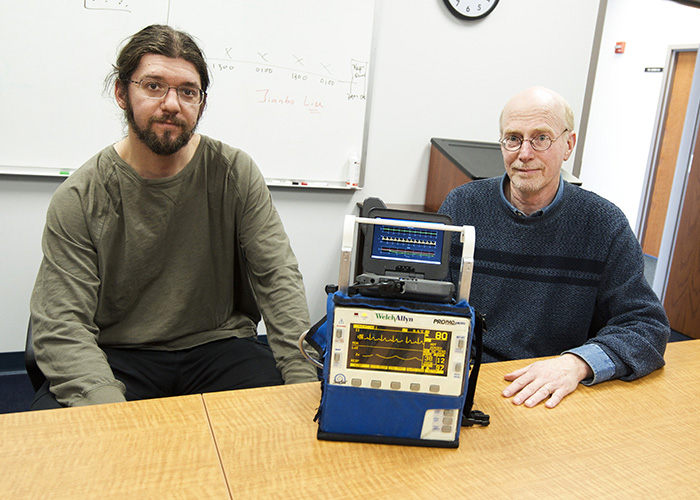BHSAI Develops System to Identify Patients with Severe Bleeding During Transport

Did you know that the majority of casualties that die on the battlefield die from uncontrolled bleeding? Analysis of data from conflicts in Iraq and Afghanistan indicates that approximately 22 percent of Service Members who died following severe bleeding after injury could have potentially been saved had their hemorrhaging been controlled early on.
Experts in the combat casualty care community believe that the opportunity to save casualties is in the pre-hospital environment. Saving a life does not just happen once you get to the hospital, it happens when you can manage hemorrhage at the point of injury or in transit to a medical treatment facility.
Given this information, how would one go about handling, or even recognizing the need for administering a blood transfusion? The Biotechnology High Performance Computing Software Applications Institute, one of the Telemedicine & Advanced Technology Research Center's key labs, is addressing this issue with development of the Automated Processing of the Physiologic Registry for Assessment of Injury Severity system, or APPRAISE.
APPRAISE is an artificial intelligence-based system that can alert medics when trauma patients are in need of massive blood transfusions without any human intervention. It collects and analyzes, in real time, vital sign information from the patient during pre-hospital transport. It then uses the results of that analysis to determine if the patient will need a massive blood transfusion before the patient arrives at the hospital.
The system consists of an off-the-shelf vital signs monitor connected to a ruggedized PC running Microsoft Windows. Dr. Jaques Reifman, Ph.D., BHSAI director, and members of his team, Maxim Khitrov and Jianbo Liu, Ph.D., and Andrew T. Reisner, M.D., an investigator with BHSAI at the time of development, and an emergency room doctor at Massachusetts General Hospital, collaborated to develop the APPRAISE system.
"A benefit of the system is that it uses standard vital signs, such as EKG, heart rate, and blood pressure, which caregivers are already familiar with," said Reifman . "There is no need for training care givers to new sensor modalities, so APPRAISE can be easily disseminated throughout the healthcare system."
The team worked with Boston MedFlight, a not-for-profit organization operating in Boston and New England that served as the equivalent to a shock trauma medevac, to test and validate the BHSAI-developed mathematical models and algorithms in a prospective study.
For nearly two years the APPRAISE system was used in Boston MedFlight helicopters to monitor trauma patients during emergency transports. Patients were then transported to one of three hospital partners: Massachusetts General Hospital, Brigham and Women's Hospital, and Beth Israel Deaconess Medical Center.
By comparing clinical and trauma registry data with computer predictions, BHSAI scientists found that the APPRAISE system was able to automatically identify casualties in need of massive blood transfusions with 78 percent sensitivity and 90 percent specificity within 10 minutes of the start of transport to the trauma center. This was the first time that anyone, not just the Army, had been able to collect and analyze data in real time as patients were being transported.
The BHSAI team has received two U.S. patents for the APPRAISE system and is currently pursuing FDA approval and a licensing agreement with a commercial partner.
Excited about the results and what this technology could mean for Warfighters in the future Reifman said, "[The] bottom line is that the majority of the casualties on the battlefield are due to uncontrollable bleeding. Here, we deployed in the civilian setting a technology that demonstrates how we can identify bleeding patients pre-hospital, in real time, and in a fully automated fashion in a prospective trial."
More information about the APPRAISE system trial will be documented in the May 2015 issue of the journal Shock.














